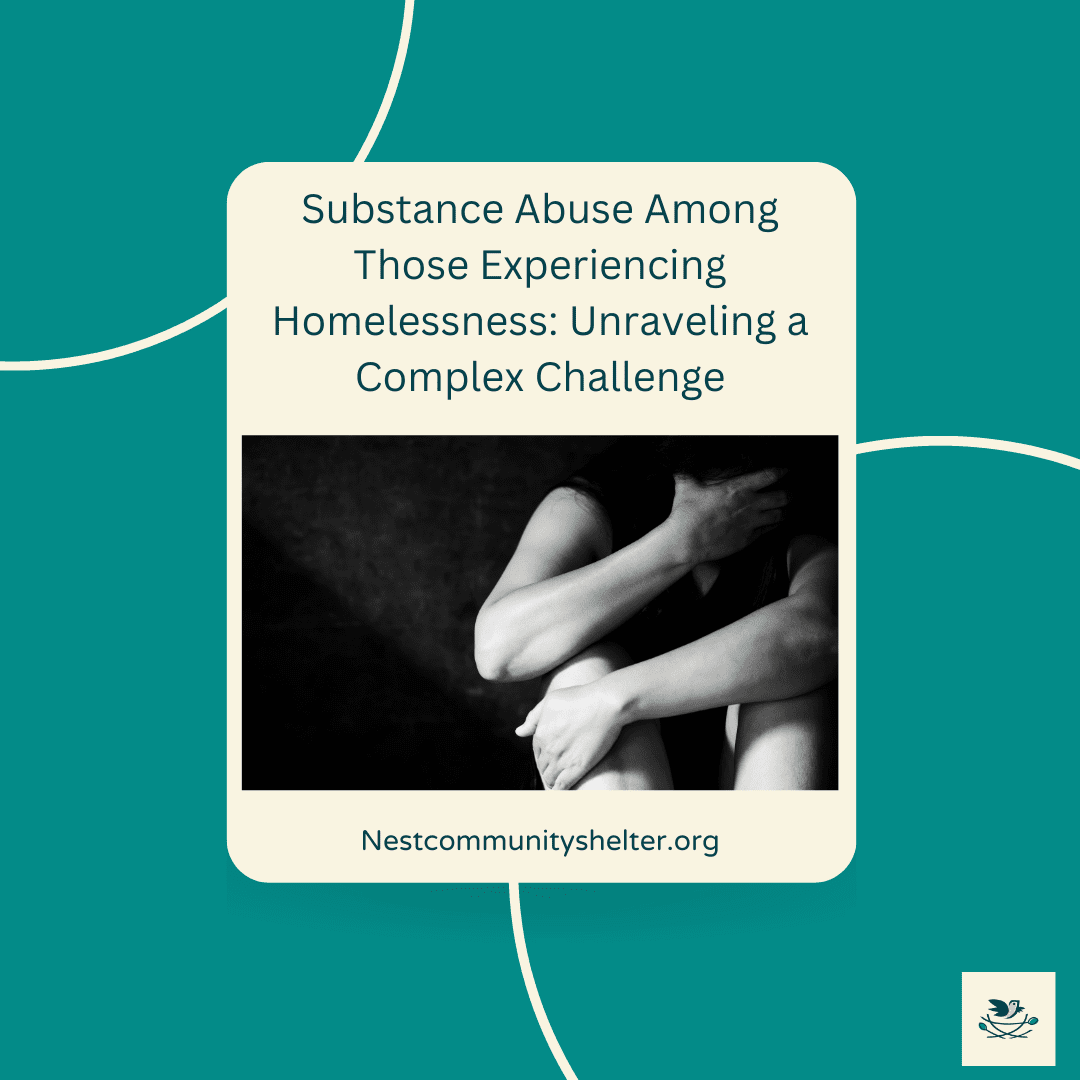
In unhoused communities across the United States and right here in LaPorte County, substance abuse is a pervasive and complex issue, further exacerbating the challenges faced by those without stable housing. Today, we want to highlight the most common types of substance abuse within the homeless population that we see in our shelter. This is crucial for providing effective support systems and interventions. We want to share with you all the prevalent substances, delve into statistical data, and discuss the formidable obstacles faced by support systems and our community organizations in addressing substance abuse among those experiencing homelessness.
Common Types of Substance Abuse:
- Alcohol: Alcohol abuse is a significant issue among those experiencing homelessness nationally and right here in our area. Alcohol abuse often serves as a coping mechanism for the harsh realities of life on the streets. According to a report by the Substance Abuse and Mental Health Services Administration (SAMHSA), approximately 38% of homeless individuals engage in problematic alcohol use.
- Opioids: Opioid abuse has reached epidemic proportions across the United States, and our unhoused population in La Porte County is not immune to this crisis. We believe that studies indicate that around 25% of homeless individuals struggle with opioid addiction, contributing to a heightened risk of overdose and associated health complications.
- Methamphetamine: The use of methamphetamine is on the rise among the homeless population across the U.S., offering a temporary escape from the challenges they face daily. SAMHSA reports that nearly 16% of homeless individuals battle methamphetamine addiction, highlighting the need for targeted interventions. Methamphetamine is often combined with Fentanyl and other street drugs.
- Cannabis: While cannabis is often considered less harmful than other substances by some, its abuse remains prevalent among those experiencing homelessness. Individuals experiencing homelessness who engage in problematic cannabis use hinder their ability to access support services.
Statistics
To paint an accurate and realistic picture of the gravity of substance abuse within the homeless community, statistical insights are crucial:
- The National Coalition for the Homeless reports that 38% of homeless individuals abuse alcohol, 26% engage in substance use disorders, and 26% struggle with opioid addiction.
- According to the Annual Homeless Assessment Report to Congress, nearly 17% of homeless individuals live with serious mental illnesses, often co-occurring with substance abuse disorders.
- SAMHSA reveals that approximately 40% of homeless individuals with substance use disorders do not receive any form of treatment.
These sobering statistics are something that we see on a daily basis at Nest. Our goal is to rehabilitate and support our unhoused neighbors as they recover. However, Nest and our partnership organizations face significant challenges in providing consistent and effective change in the lives of our guests. Supporting our guests poses unique challenges that most housed individuals would not face. Below, we want to share some of our challenges in providing support to our guests. Please know that Nest is not unique in these challenges; most shelters and community support partners face these exact challenges across the country.
- Limited Access to Treatment: Homeless individuals encounter barriers to accessing substance abuse treatment, including a lack of insurance, transportation, and available facilities. The shortage of affordable and accessible treatment options can significantly hinder efforts to provide comprehensive care.
- Mental Health Co-occurrence: Substance abuse often coexists with mental health disorders among the unhoused population, complicating treatment approaches. Support systems struggle to address both issues simultaneously, as resources for mental health services are often insufficient or limited in availability.
- Stigma and Discrimination: Homeless individuals face pervasive stigma and discrimination, further isolating them from mainstream society. This stigma extends to substance abuse, creating reluctance among homeless individuals to seek help due to fear of judgment and marginalization.
- Lack of Coordination Among Services: The fragmentation of services can pose a significant challenge at times. Substance abuse treatment, mental health services, and housing support often operate independently, leaving a tricky situation for an unhoused individual to navigate.
Addressing substance abuse within the homeless population demands a multi-faceted and compassionate approach. Support systems and community organizations must continue to collaborate to overcome challenges related to access, mental health co-occurrence, stigma, and service coordination. By understanding the prevalent substances and the unique circumstances faced by homeless individuals, as a community, we can work towards creating a more inclusive and effective system that provides hope and recovery for those in need. Nest is not alone in these struggles as organization’s across the U.S. work to support healing from substance abuse for our guests.



